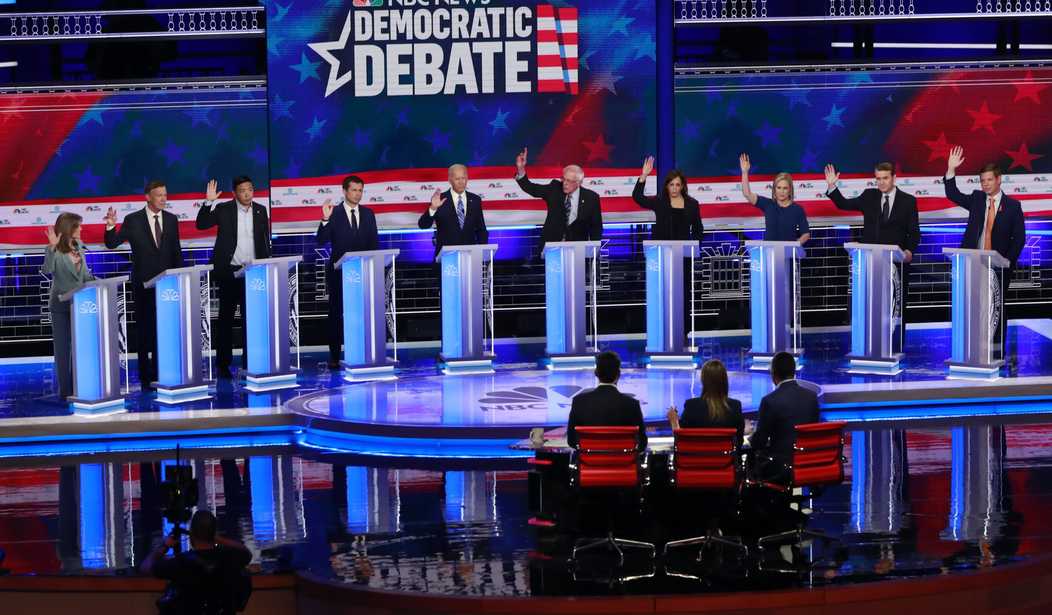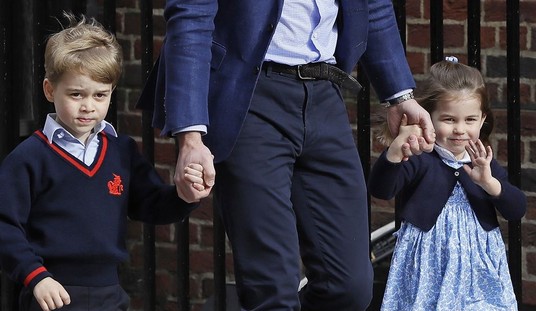The Democratic debate last night may have been the last stand for a dozen or more candidates in the field. That’s because the party has upped the ante for many of the lesser candidates by creating even more stringent criteria for the third set of debates, scheduled for September 12-13.
Specifically, in order for a candidate to qualify for the third debate, they must achieve the following benchmarks:
Candidates will need to have 130,000 unique donors and register at least 2 percent support in four polls. They have until Aug. 28 to reach those benchmarks.
These criteria could easily halve the field: The first two sets of debates included 20 of the 24 candidates, but a New York Times analysis of polls and donor numbers shows that only 10 to 12 candidates are likely to make the third round.
So far, only 7 Democrats have qualified. Don’t fret, though. I’m sure your favorite kook will be there to entertain us in September:
-
Former Vice President Joseph R. Biden Jr.
-
Senator Cory Booker of New Jersey
-
Mayor Pete Buttigieg of South Bend, Ind.
-
Senator Kamala Harris of California
-
Former Representative Beto O’Rourke of Texas
-
Senator Bernie Sanders of Vermont
-
Senator Elizabeth Warren of Massachusetts
A few others are near the threshold, including Julian Castro, Amy Klobuchar, and Andrew Yang. Alas, it appears that the colorful Tulsi Gabbard may come up a little short.
But is the party “culling the herd” too soon? Given last night’s mediocre TV ratings, they’re going to need something to get people interested.
When I pressed Perez to explain the DNC’s insistence on arbitrarily culling the herd, he airily responded, “One of the most prolific grassroots fundraisers in politics is Donald Trump…. If you can’t connect with the grassroots every day as a Democrat, you’re going to have trouble winning.”
But the way that the Democratic presidential calendar has been organized since the days of Jimmy Carter encourages candidates to break through in the Iowa caucuses and the New Hampshire primary, and then take off nationally. In 2004, for example, John Kerry jumped 40 points in the national Gallup Poll after winning Iowa and New Hampshire. In October 2007, Barack Obama was mired in the doldrums just above 20 percent support in the national Gallup Poll.
Very few candidates will have the chance to leap ahead after the early contests this cycle. This is a time when they should be going local, focusing on the early races in Iowa and New Hampshire. But Perez and the DNC have changed the rules to emphasize national fundraising. Why? The goal is not (despite Perez’s glib reference to Trump) to match the GOP’s grassroots fundraising operation, but rather to provide the TV networks with the dramatically smaller debate stages they crave for ratings reasons.
The truth is, the Democratic field is filled with extremists, septuagenarians, minor-league politicians, and obscenely rich private citizens with no experience in government.
Compare that to the GOP superstars who lined up on the debate stage in 1980:
- Ronald Reagan, a two-term governor of California and a conservative star for more than a decade
- George Bush, former congressman, UN ambassador, CIA director, and perhaps the most qualified individual to run for president up to that time.
- Howard Baker, a foreign policy expert and senator from Tennessee, known for his relentless pursuit of Richard Nixon
- John Anderson, an Illinois congressman who was considered one of the most brilliant men in Congress at the time
- Phil Crane, another brilliant congressman who knew tax and budget issues backward and forward
- John Connally, the charismatic ex-governor of Texas and whose communication skills rivaled Reagan’s
- Bob Dole, war hero and Kansas senator whose sharp tongue was legendary in the Senate
Compared to the bunch of aging liberal stalwarts and mid-level governors, senators, and representatives on that stage last night, any one of those Republicans on the dais in 1980 made the best of the Democrats look tiny in stature.










Join the conversation as a VIP Member